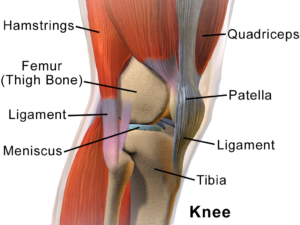Chronic Pain
Anterior Knee Pain – What’s the Problem?

Patellofemoral pain syndrome (PFPS) is a very common, extremely frustrating condition that occurs in many people whether they are elite athletes or just lead an active lifestyle. It may occur in people who also do limited activity. PFPS is more common in women than men.
What is it?
Knee pain arising from the joint between the kneecap (patella) and the thigh bone (femur), due to some form of irritation. The pain can be directly at the front of the knee, or it can appear to be on the sides of the kneecap.
The cause of PFPS is unknown, and can be due to many contributing factors that really vary from person to person. This means that the physiotherapy assessment process is really important not only for the diagnosis but to provide direction for the most effective treatment. Below is an outline of what to expect in assessment, diagnosis and management of this condition.
Assessment of the Knee
– In depth discussion surrounding specific details of the patient’s experience to help determine what is causing the pain, and the history of the condition
– Muscle examination – strength testing, length testing, pain on contraction
– Movement examination –walking, examine biomechanical alignment
– Other tests: squat, stairs, kneeling
– Ruling out other joints – Most commonly hip and ankle, underlying problems in either of these two joints can contribute to knee pain
– Depending on the presentation, if the physiotherapist thinks that there may be other possible diagnoses they may do other specific tests to rule out/rule in a potential diagnosis.
Diagnosis
A diagnosis for PFPS is often made when there is a clear involvement of the patellofemoral joint, where other structures surrounding the knee don’t appear to contribute.
Those with PFPS will often have difficulty with hills and pain on squatting, as well as a definitive lack of traumatic event prior to onset of pain.
Management
As previously mentioned, management will vary depending on the contributing factors, but some key treatment principles should be observed.
- Rest. PFPS is an overuse injury so an initial period of deloading to allow the joint to calm down is very important. This may only be for a couple of days or a week depending on the severity.
- Gradual re-loading – As it is an overuse injury, a graduated return to activities will help to prevent the injury from re-occuring.
- Exercise program – exercises to target muscular imbalances, tightness or weakness can help to improve biomechanics which is believed to help prevent PFPS. Common exercises are outlined below.
- Pain relief – Taping, heat or ice all may be used to help provide some level of pain relief.
- Patience. PFPS can be a longstanding condition, patience and perseverance are key for successful treatment outcomes!
Common Exercises to Help PFPS
– Weak hip abductors (outer leg muscles) are a common contributor to knee pain in general. Your physiotherapist will most likely give you some exercises to work on strength.
– Muscular imbalances or weakness around the knee can be targeted by improving the strength in the weaker muscles. Often this is targeted by general lower limb exercises, focusing on correct alignment e.g. squat, lunge, single leg exercises
– Stretching/self trigger pointing the muscles that are tight will also help to even out imbalances. Common tight muscles include hamstrings, hip flexors, TFL/ITB, calf muscle.
References
https://www.physio-pedia.com/Patellofemoral_Pain_Syndrome
https://www.ouh.nhs.uk/patient-guide/leaflets/files/33852Ppfps.pdf
If you are suffering from knee pain, contact us today to book in for an initial physiotherapy assessment and diagnosis!
Imagine a life free from aches and pains!
